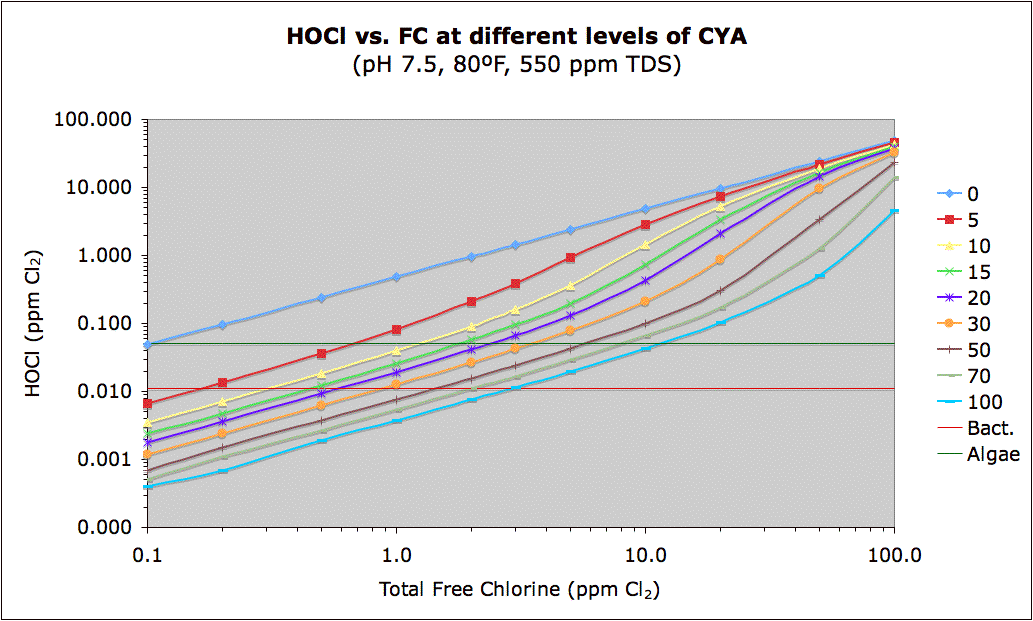Wow! what a revelation!The powder amount doesn’t affect the test as long as there’s a few undissolved particles in there it’s fine. Note that heat also degrades chlorine, not just UV.
I just tested the water with 1, 2, and 3 perfect scoops of the R-0870 DPD powder (shaken for 30 seconds) and 10mL of pool water each, and they all cleared out at exactly 24 drops of R-0871 FAS-DPD Titrating reagent.
Dang, here I was trying to be exact because I figured it was a chemistry reaction that was balanced ratios. But I guess the powder binds with chlorine and any excess un-bound powder is no longer a part of the reaction with the drops. So the 2 scoop recommendation should always fulfill the minimum required powder, especially for a 10mL sample... and not crazy levels of chlorine. Out of sheer curiosity, I wonder what the maximum chlorine amount 2 scoops will accurately read up to?


